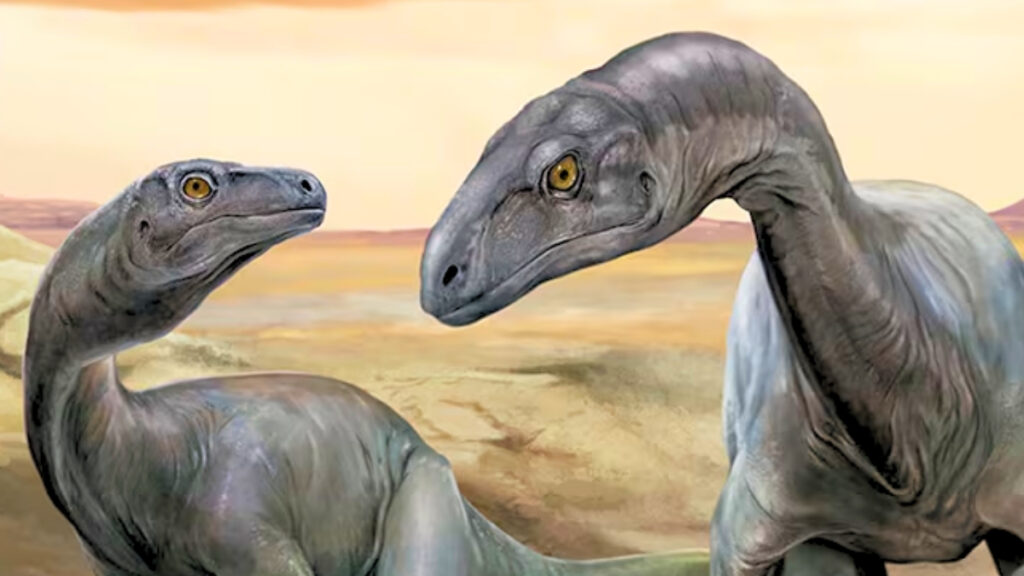
Argentinian scientists have made a groundbreaking discovery in the Andes Mountains, unearthing fossilized bones of one of the world’s oldest dinosaur species. The CONICET research agency announced on Wednesday that a paleontological team led by the institute found the nearly complete skeleton of a small, long-necked reptile named Huayracursor jaguensis at an altitude of 3,000 meters (9,842 feet) in Argentina’s northwest.
The team uncovered a significant portion of the dinosaur’s skull, a complete vertebral column extending to the tail, and nearly intact forelimbs and hindlimbs, according to CONICET. The discovery, published in Nature magazine, is expected to provide valuable insights into the evolution of early dinosaurs.
Significance of the Discovery
Agustin Martinelli, one of the authors of the study, highlighted the importance of the find, noting that the Huayracursor is estimated to have roamed the Earth between 230 and 225 million years ago. This timeline places it among the oldest known dinosaurs, offering a rare glimpse into the species that existed at the end of the Triassic period. During this era, the first dinosaurs and the ancestors of mammals began to emerge.
Although Huayracursor jaguensis belongs to a lineage of herbivorous dinosaurs that includes long-necked giants, the researchers noted that an adult of this species only measured about two meters in length and weighed approximately 18 kilograms (40 pounds).
Context and Historical Parallels
The discovery of Huayracursor jaguensis is particularly significant as it adds to the growing body of evidence about dinosaur evolution during the Triassic period. This era was a pivotal time in Earth’s history, marking the transition from a world dominated by reptiles to one where dinosaurs began to rise to prominence.
Similar discoveries in recent years have painted a more detailed picture of how dinosaurs evolved and diversified. For instance, the recent unearthing of a new ‘Megaraptor’ species with its last meal still in its mouth has provided insights into the dietary habits and ecological roles of these ancient creatures.
Expert Opinions and Implications
Paleontologists around the world have hailed the discovery as a significant contribution to our understanding of early dinosaur evolution. Dr. Emily Thompson, a paleontologist at the University of California, remarked,
“This find not only fills a critical gap in our knowledge of dinosaur ancestry but also highlights the rich paleontological heritage of the Andes region.”
The implications of this discovery extend beyond academic circles. By understanding the evolutionary pathways of early dinosaurs, scientists can better comprehend the environmental and biological factors that influenced their development and eventual dominance.
Looking Forward
The announcement comes as researchers continue to explore the Andes Mountains, a region that has proven to be a treasure trove of paleontological finds. Future excavations are expected to yield even more insights into the ancient ecosystems that once thrived in this part of the world.
As the scientific community digests the findings from Huayracursor jaguensis, further studies are anticipated to unravel the mysteries of early dinosaur evolution. The ongoing research promises to deepen our understanding of how these ancient creatures adapted and evolved in response to changing environments.
Meanwhile, the discovery underscores the importance of preserving and studying fossil sites globally, as they hold the keys to unlocking the secrets of our planet’s distant past.







